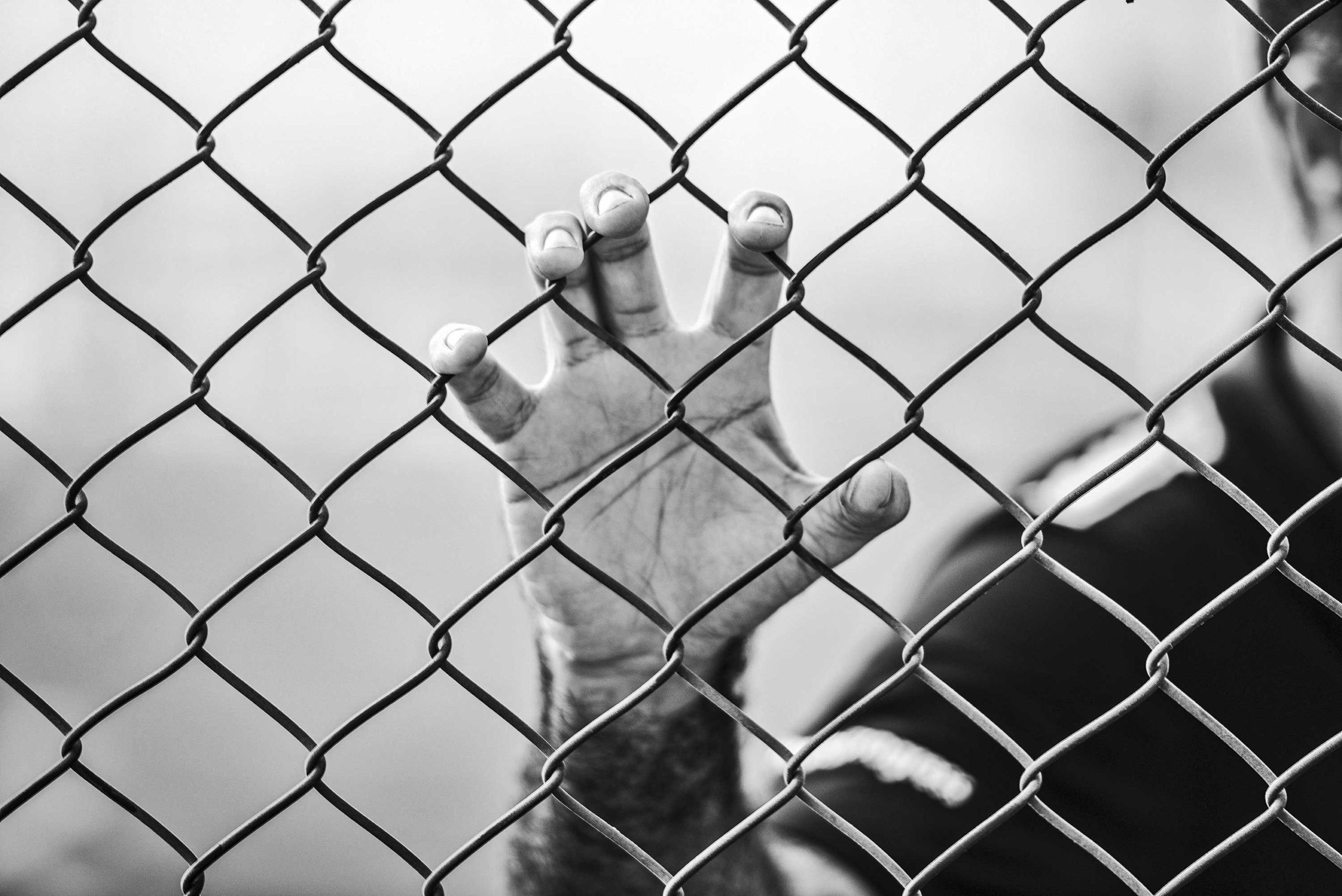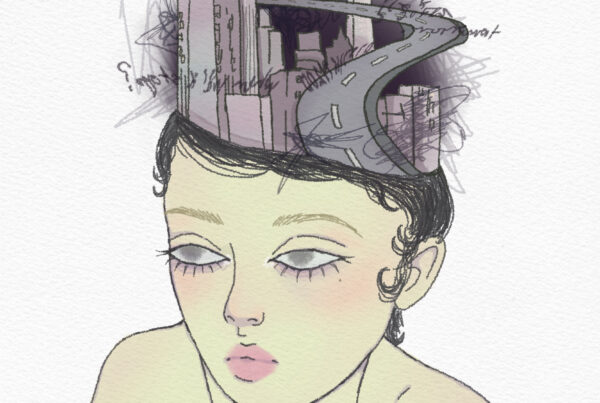
Being convicted of a crime one did not commit is a profoundly life-changing and traumatic experience, while being exonerated might be one of the most relieving ones. Yet, reintegration is often not as idyllic as one might think – challenges around housing, employment, relationships, and mental health arise. The fight against injustice does not cease with stepping through the prison gate back into freedom, it rather resembles a life-long task for many exonerees and their families.
Being convicted of a crime one did not commit is a profoundly life-changing and traumatic experience, while being exonerated might be one of the most relieving ones. Yet, reintegration is often not as idyllic as one might think – challenges around housing, employment, relationships, and mental health arise. The fight against injustice does not cease with stepping through the prison gate back into freedom, it rather resembles a life-long task for many exonerees and their families.

Photo by Milad Fakurian on Unsplash

Photo by Milad Fakurian on Unsplash
A sudden, positive change after periods of uncertainty, pressure, or stress is often accompanied by the feeling of relief. It is an entirely positive, hopeful experience, taking away previous worries and negative anticipations and replacing them with a much-preferred outcome. Think of a school child receiving a good grade, even though the test itself didn’t feel that good. An adult worried about paying bills for months, and then unexpectedly being promoted at work, making the bills less worrisome. Or a dog owner finding her dog after it ran away. Touching your back pocket and not feeling your phone – realising it was in your hand all along. We all know these everyday feelings of relief, and often they affect sensitive areas in our lives such as money, grades, or relationships. But for some, they touch life itself in its pure, precious form.
April 1989. A young woman is raped and assaulted while going for a run in Central Park, New York. A group of adolescents is at the wrong place, wrong time, wrong skin colour. The youngsters end up being convicted for a crime they did not commit. Many years later, they are released, and their convictions vacated (Salaam, 2023). Now, an entrance gate to Central Park is renamed the Gate of the Exonerated to commemorate the incredible miscarriage of justice in their case, but also representative for all wrongfully convicted (Gate of The Exonerated, n.d.).
The Netherlands. Paediatric nurse Lucia de Berk is convicted of murder in four cases, and attempted murder in three more, facing life imprisonment and no possibility of parole. After years in prison, the conviction is overturned – statistical and medical information has been wrongly reported or misinterpreted by the court. Now, several books, journal articles and a film tell her story to stress problems with statistics and biases in trials (Meyrer, 2023).
The gate, financial compensations, apology letters, books, films, and Netflix shows are symbols for the immeasurable relief felt by the exonerated. Yet, with liberation does not only come bliss and happiness, but often also insecurity, bitterness, and challenges in a world that might be very different after years or decades of wrongful imprisonment. Regaining freedom has always been the ultimate goal for the wrongly convicted, but it also forces them to deal with the years passed in which children grew up, partners moved on, and friends stopped believing in innocence. The trauma of being wrongly convicted runs deep – but so does the relief of reaffirming and reclaiming one’s life.
“Projects that specifically target exonerees and their needs are indispensable for their successful reintegration into society.”
While wrongful convictions are dealt with differently in every country and legislation, their common causes and their effect on the individual and society are largely comparable. The Death Penalty Information Centre (DPIC, n.d.) has published extensive statistics about causes of and contributions to wrongful convictions in the US: Official misconduct, perjury and false accusations, false confessions, misleading or incorrect forensic evidence, and eyewitness misidentification are the most common. All these elements are also highly relevant for overturning an existing conviction, for example by reassessing the evidence at hand or investigating the prosecutorial conduct during the original trial (Gould & Leo, 2010). In addition to that, technological advancements such as the (re-)analysis of DNA are crucial for potential exonerations and have already helped in many cases – including some wrongfully convicted on death row (DPIC, n.d.).
But the road to exoneration is strenuous and often requires the collective effort of families, journalists, lawyers, and non-governmental organisations such as the Innocence Project. Despite the unique story and process underlying each exoneration case, it seems to be incredibly useful when collectives combine and pool different forces to help innocent people on their long way to liberation. But the fight does not end upon release – one might say that in the moment of regaining freedom, the fight just shifts from courtrooms and prison cells to job applications, housing ads, and dealing with inadequate support systems. Many post-release programmes actively target reoffending and crime prevention and are therefore not the right place for exonerees to receive social support (Kregg, 2016). Projects that specifically target exonerees and their needs are indispensable for their successful reintegration into society.
In interviews with exonerees, DeShay (2023) investigated the main challenges exonerees face upon release and what they experience in a changed society. For example, monetary compensations seem to help exonerees in the first crucial period because they do not have to rush into any available job and are still able to pay for basic needs such as food or rent. Many of the interviewees advise to take things “day by day” and speak about daily frustrations and novel challenges such as using a credit card for the first time at the supermarket. Many of them stress how helpful they found the support from other exonerees who have been released before and have successfully navigated life after release. This again reinforces the unique experience of exonerees and how difficult it is for the general care system to provide adequate post-exoneration support.
“The tremendous impact of wrongful convictions is unfortunately not an individual experience but resembles an earthquake – with family and friends right next to the epicentre.”
In addition to seeking help from similar individuals, receiving support from social workers and psychologists can also be beneficial. Anything from finding one’s way back into a modern society to dealing with the deep emotional trauma and suffering during incarceration are often-experiences troubles. Grounds (2005) draws similarities between war veterans and exonerees, emphasising not only the estrangement from life outside and one’s family but also the life- and sometimes personality-changing experience in itself. Surviving in prison for years or decades requires enormous resilience in the face of abuse, coercion, isolation, and betrayal, and this often translates to mental health and social adjustment problems in everyday life. Exonerees most frequently suffer from PTSD, anxiety, and depression but also from more complex or specific emotional states such as feelings of grief or loss, and relationship issues (Grounds, 2005; Thomas & Hoyt, 2023). Accessible mental health counselling and free therapy should therefore be the bare minimum of compensation, as is for example still fought for by the group Life After Innocence in Illinois.
The tremendous impact of wrongful convictions is unfortunately not an individual experience but resembles an earthquake – with family and friends right next to the epicentre. Witnessing how a loved one is accused and convicted of a crime can stir up questions about innocence and guilt, beliefs and loyalties. The ones on the outside are also confronted with the stigma of prison or the crime itself, be it “only” within the neighbourhood or even publicly in case of a particularly notorious crime (Jenkins, 2013). Apart from that, strongly believing in innocence also entails fighting against the Goliath who is responsible for this injustice in the first place – the state and the system. For many, it becomes the leitmotif of their lives: How could this happen? Why us? Will we ever find peace? And sadly, not even the ultimate success of liberation can make up for the lost years and the experienced secondary trauma (Jenkins, 2013). Helping the exoneree to reclaim their life and their story is another long, strenuous fight often including and impacting the close social relationships. The verdict of innocence does not naturally transcend the courtroom. It takes a village to reclaim the narrative of a wrongful conviction and tell the real, ugly, hurtful truth.
Because of the unique trauma experienced by exonerees and their environment, many of the affected want to change the system and offer their support. For example, Yusef Salaam is one of the exonerated in the Central Park jogger case and is now an active board member of the Innocence Project – among many other wrongfully convicted (Innocence Project, n.d.). Together, they have created a community that takes on new cases, helps with successful reintegration, and fights for important and necessary changes in the criminal justice system. Together, their voice is heard all over the world telling stories about the scars they should have never had. Together, they can share and pass on the relief they felt when hearing: “Innocent.” Yet, it is important to understand that not everyone wants to make this experience the centrepiece of their life. It might be too painful, too emotional, too burdensome for some to also spend the rest of their lives fighting. Regardless of the way that people deal with their exoneration – their incomparable tragedies deserve all the compassion, counselling, and compensations to help them define their lives after liberation exactly the way they desire.
References
-
Death Penalty Information Center (n.d.). Innocence. https://deathpenaltyinfo.org/policy-issues/innocence
-
DeShay, R. A. (2023). “Take It One Day at a Time and Try to Adjust to What’s Going on”: Exonerees’ Advice to the Newly Exonerated and Future Exonerees About Life Post-Release. Criminal Justice Review, 48(1), 69-84.
-
Gate of the Exonerated (n.d.). https://www.gateoftheexonerated.org/exonerated-5-story
-
Grounds, A. T. (2005). Understanding the Effects of Wrongful Imprisonment (From Crime and Justice: A Review of Research, Volume 32, P 1-58, 2005, Michael Tonry, ed.-See NCJ-241498).
-
Gould, J. B., & Leo, R. A. (2010). One hundred years later: Wrongful convictions after a century of research. The Journal of Criminal Law and Criminology, 825-868.
-
Innocence Project (n.d.). https://innocenceproject.org/about/
-
Jenkins, S. (2013). Secondary victims and the trauma of wrongful conviction: Families and children’s perspectives on imprisonment, release and adjustment. Australian & New Zealand Journal of Criminology, 46(1), 119-137.
-
Kregg, C. (2016). Right to counsel: Mental health approaches to support the exonerated. In Advocates’ Forum (Vol. 2016, pp. 31-44).
-
Meyrer, L. (2023). Lucia de Berk: the Dutch nurse who was wrongfully imprisoned for six years. https://dutchreview.com/culture/lucia-de-berk-dutch-nurse-wrongfully-imprisoned-6-years/
-
Thomas, K. A. & Hoyt, W. T. (2023). The Psychological Impact of Wrongful Convictions. Psychological Trauma: Theory, Research, Practice, and Policy, Publish Ahead of Print, doi: 10.1037/tra0001425
-
Salaam, Y. (2023). https://www.yusefspeaks.com/the-exonerated-5
A sudden, positive change after periods of uncertainty, pressure, or stress is often accompanied by the feeling of relief. It is an entirely positive, hopeful experience, taking away previous worries and negative anticipations and replacing them with a much-preferred outcome. Think of a school child receiving a good grade, even though the test itself didn’t feel that good. An adult worried about paying bills for months, and then unexpectedly being promoted at work, making the bills less worrisome. Or a dog owner finding her dog after it ran away. Touching your back pocket and not feeling your phone – realising it was in your hand all along. We all know these everyday feelings of relief, and often they affect sensitive areas in our lives such as money, grades, or relationships. But for some, they touch life itself in its pure, precious form.
April 1989. A young woman is raped and assaulted while going for a run in Central Park, New York. A group of adolescents is at the wrong place, wrong time, wrong skin colour. The youngsters end up being convicted for a crime they did not commit. Many years later, they are released, and their convictions vacated (Salaam, 2023). Now, an entrance gate to Central Park is renamed the Gate of the Exonerated to commemorate the incredible miscarriage of justice in their case, but also representative for all wrongfully convicted (Gate of The Exonerated, n.d.).
The Netherlands. Paediatric nurse Lucia de Berk is convicted of murder in four cases, and attempted murder in three more, facing life imprisonment and no possibility of parole. After years in prison, the conviction is overturned – statistical and medical information has been wrongly reported or misinterpreted by the court. Now, several books, journal articles and a film tell her story to stress problems with statistics and biases in trials (Meyrer, 2023).
The gate, financial compensations, apology letters, books, films, and Netflix shows are symbols for the immeasurable relief felt by the exonerated. Yet, with liberation does not only come bliss and happiness, but often also insecurity, bitterness, and challenges in a world that might be very different after years or decades of wrongful imprisonment. Regaining freedom has always been the ultimate goal for the wrongly convicted, but it also forces them to deal with the years passed in which children grew up, partners moved on, and friends stopped believing in innocence. The trauma of being wrongly convicted runs deep – but so does the relief of reaffirming and reclaiming one’s life.
“Projects that specifically target exonerees and their needs are indispensable for their successful reintegration into society.”
While wrongful convictions are dealt with differently in every country and legislation, their common causes and their effect on the individual and society are largely comparable. The Death Penalty Information Centre (DPIC, n.d.) has published extensive statistics about causes of and contributions to wrongful convictions in the US: Official misconduct, perjury and false accusations, false confessions, misleading or incorrect forensic evidence, and eyewitness misidentification are the most common. All these elements are also highly relevant for overturning an existing conviction, for example by reassessing the evidence at hand or investigating the prosecutorial conduct during the original trial (Gould & Leo, 2010). In addition to that, technological advancements such as the (re-)analysis of DNA are crucial for potential exonerations and have already helped in many cases – including some wrongfully convicted on death row (DPIC, n.d.).
But the road to exoneration is strenuous and often requires the collective effort of families, journalists, lawyers, and non-governmental organisations such as the Innocence Project. Despite the unique story and process underlying each exoneration case, it seems to be incredibly useful when collectives combine and pool different forces to help innocent people on their long way to liberation. But the fight does not end upon release – one might say that in the moment of regaining freedom, the fight just shifts from courtrooms and prison cells to job applications, housing ads, and dealing with inadequate support systems. Many post-release programmes actively target reoffending and crime prevention and are therefore not the right place for exonerees to receive social support (Kregg, 2016). Projects that specifically target exonerees and their needs are indispensable for their successful reintegration into society.
In interviews with exonerees, DeShay (2023) investigated the main challenges exonerees face upon release and what they experience in a changed society. For example, monetary compensations seem to help exonerees in the first crucial period because they do not have to rush into any available job and are still able to pay for basic needs such as food or rent. Many of the interviewees advise to take things “day by day” and speak about daily frustrations and novel challenges such as using a credit card for the first time at the supermarket. Many of them stress how helpful they found the support from other exonerees who have been released before and have successfully navigated life after release. This again reinforces the unique experience of exonerees and how difficult it is for the general care system to provide adequate post-exoneration support.
“The tremendous impact of wrongful convictions is unfortunately not an individual experience but resembles an earthquake – with family and friends right next to the epicentre.”
In addition to seeking help from similar individuals, receiving support from social workers and psychologists can also be beneficial. Anything from finding one’s way back into a modern society to dealing with the deep emotional trauma and suffering during incarceration are often-experiences troubles. Grounds (2005) draws similarities between war veterans and exonerees, emphasising not only the estrangement from life outside and one’s family but also the life- and sometimes personality-changing experience in itself. Surviving in prison for years or decades requires enormous resilience in the face of abuse, coercion, isolation, and betrayal, and this often translates to mental health and social adjustment problems in everyday life. Exonerees most frequently suffer from PTSD, anxiety, and depression but also from more complex or specific emotional states such as feelings of grief or loss, and relationship issues (Grounds, 2005; Thomas & Hoyt, 2023). Accessible mental health counselling and free therapy should therefore be the bare minimum of compensation, as is for example still fought for by the group Life After Innocence in Illinois.
The tremendous impact of wrongful convictions is unfortunately not an individual experience but resembles an earthquake – with family and friends right next to the epicentre. Witnessing how a loved one is accused and convicted of a crime can stir up questions about innocence and guilt, beliefs and loyalties. The ones on the outside are also confronted with the stigma of prison or the crime itself, be it “only” within the neighbourhood or even publicly in case of a particularly notorious crime (Jenkins, 2013). Apart from that, strongly believing in innocence also entails fighting against the Goliath who is responsible for this injustice in the first place – the state and the system. For many, it becomes the leitmotif of their lives: How could this happen? Why us? Will we ever find peace? And sadly, not even the ultimate success of liberation can make up for the lost years and the experienced secondary trauma (Jenkins, 2013). Helping the exoneree to reclaim their life and their story is another long, strenuous fight often including and impacting the close social relationships. The verdict of innocence does not naturally transcend the courtroom. It takes a village to reclaim the narrative of a wrongful conviction and tell the real, ugly, hurtful truth.
Because of the unique trauma experienced by exonerees and their environment, many of the affected want to change the system and offer their support. For example, Yusef Salaam is one of the exonerated in the Central Park jogger case and is now an active board member of the Innocence Project – among many other wrongfully convicted (Innocence Project, n.d.). Together, they have created a community that takes on new cases, helps with successful reintegration, and fights for important and necessary changes in the criminal justice system. Together, their voice is heard all over the world telling stories about the scars they should have never had. Together, they can share and pass on the relief they felt when hearing: “Innocent.” Yet, it is important to understand that not everyone wants to make this experience the centrepiece of their life. It might be too painful, too emotional, too burdensome for some to also spend the rest of their lives fighting. Regardless of the way that people deal with their exoneration – their incomparable tragedies deserve all the compassion, counselling, and compensations to help them define their lives after liberation exactly the way they desire.
References
-
Death Penalty Information Center (n.d.). Innocence. https://deathpenaltyinfo.org/policy-issues/innocence
-
DeShay, R. A. (2023). “Take It One Day at a Time and Try to Adjust to What’s Going on”: Exonerees’ Advice to the Newly Exonerated and Future Exonerees About Life Post-Release. Criminal Justice Review, 48(1), 69-84.
-
Gate of the Exonerated (n.d.). https://www.gateoftheexonerated.org/exonerated-5-story
-
Grounds, A. T. (2005). Understanding the Effects of Wrongful Imprisonment (From Crime and Justice: A Review of Research, Volume 32, P 1-58, 2005, Michael Tonry, ed.-See NCJ-241498).
-
Gould, J. B., & Leo, R. A. (2010). One hundred years later: Wrongful convictions after a century of research. The Journal of Criminal Law and Criminology, 825-868.
-
Innocence Project (n.d.). https://innocenceproject.org/about/
-
Jenkins, S. (2013). Secondary victims and the trauma of wrongful conviction: Families and children’s perspectives on imprisonment, release and adjustment. Australian & New Zealand Journal of Criminology, 46(1), 119-137.
-
Kregg, C. (2016). Right to counsel: Mental health approaches to support the exonerated. In Advocates’ Forum (Vol. 2016, pp. 31-44).
-
Meyrer, L. (2023). Lucia de Berk: the Dutch nurse who was wrongfully imprisoned for six years. https://dutchreview.com/culture/lucia-de-berk-dutch-nurse-wrongfully-imprisoned-6-years/
-
Thomas, K. A. & Hoyt, W. T. (2023). The Psychological Impact of Wrongful Convictions. Psychological Trauma: Theory, Research, Practice, and Policy, Publish Ahead of Print, doi: 10.1037/tra0001425
-
Salaam, Y. (2023). https://www.yusefspeaks.com/the-exonerated-5



